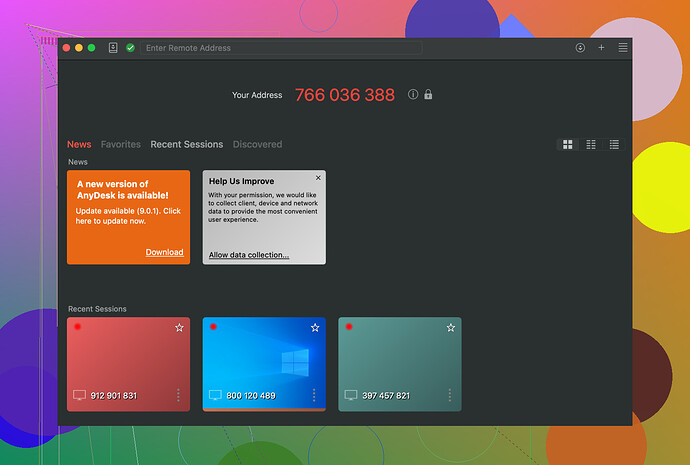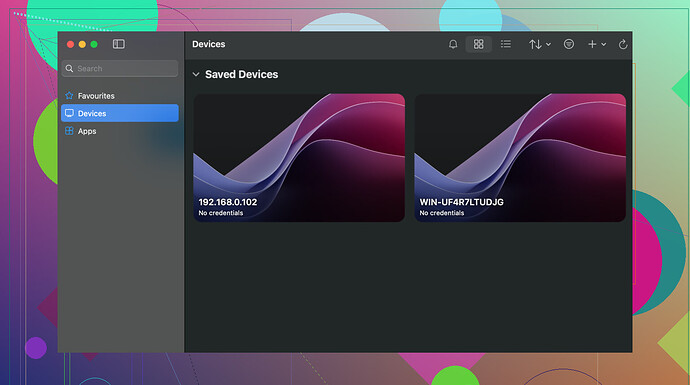I’ve been using RustDesk for remote desktop functions, but recently faced issues with it crashing frequently. I need suggestions for reliable alternatives that offer similar remote control capabilities. Any recommendations?
Discovering the Best Free Alternatives to RustDesk in 2024
Choosing the right remote desktop software can be daunting when there’s a sea of options available. RustDesk is popular, no doubt, but sometimes it’s smart to explore free alternatives that might suit your needs even better. Here’s a comprehensive dive into the top five free RustDesk alternatives in 2024 to help you decide which one aligns with your goals.
1.  HelpWire: Simplicity Meets Functionality
HelpWire: Simplicity Meets Functionality
If uncomplicated remote access is your priority, HelpWire has your back. This tool shines for its straightforward nature and reliable performance across Windows, Mac, and Linux platforms. Need quick file transfers? HelpWire’s got that. Managing multi-monitor setups? Check.
Whether troubleshooting remotely or retrieving files from afar, HelpWire keeps it simple for users who want efficient remote access.
 Ideal For:
Ideal For:
- Solo users or tiny teams needing basic remote access.
- Small business owners who require occasional troubleshooting or file access.
 Key Advantages:
Key Advantages:
- Intuitive interface with no steep learning curve.
- Lightning-fast session initialization.
- Completely free for personal and commercial purposes.
 Drawbacks:
Drawbacks:
- No compatibility with mobile devices.
- Session recording is not an option.
2.  AnyDesk: A Feature-Packed Alternative
AnyDesk: A Feature-Packed Alternative
For those who seek power in a remote desktop application, AnyDesk is a solid contender. It stands out due to its rich functionality and consistency across platforms. Advanced features like remote printing, file transfer, and wake-on-LAN make it a strong option for users with robust needs.
 Best Suited For:
Best Suited For:
- Small to medium businesses that prioritize scalable remote solutions.
- IT specialists delivering tech support across multiple locations.
 Benefits:
Benefits:
- Offers remote printing, file sharing, and an address book for contacts.
- Free users can enjoy unlimited remote sessions.
- Supports mobile devices and the management of multiple connected devices.
 Challenges:
Challenges:
- Navigating the mobile app can feel cumbersome at times.
- Clipboard syncing isn’t flawless and occasionally acts up.
- Might require manual reconnections in rare cases.
3.  Chrome Remote Desktop: A Hassle-Free Experience
Chrome Remote Desktop: A Hassle-Free Experience
Sometimes, simplicity wins over features. Chrome Remote Desktop is perfect for users who need a lightweight, no-frills approach to remote access. It operates as an extension from the Chrome browser, is free, and supports multiple platforms securely.
 Ideal For:
Ideal For:
- Freelancers or travelers needing access to their systems on the go.
- Those who already use Chrome extensively and want everything in one ecosystem.
 Highlights:
Highlights:
- 100% free and works across Mac, Linux, Windows, Android, and iOS.
- Supports multi-monitor configurations effortlessly.
- Extremely easy to set up—no technical expertise needed.
 Limitations:
Limitations:
- Lacks advanced tools like file transfer or remote printing.
- Only functions within the realm of the Chrome browser.
- No integrated communication features.
4.  Microsoft Remote Desktop: Tailored for Windows Users
Microsoft Remote Desktop: Tailored for Windows Users
If you’ve taken a deep dive into the Windows ecosystem, Microsoft Remote Desktop is your go-to choice. Whether it’s managing administrator settings or making file adjustments, this tool is crafted specifically with the Windows user in mind.
 Best Applications:
Best Applications:
- System admins tasked with juggling multiple workstations.
- Users firmly rooted in Microsoft’s infrastructure who need remote device control.
 Advantages:
Advantages:
- Remote administrative rights at no extra cost.
- Seamless access to files across systems remotely.
- Simplified process monitoring for system management.
 Downsides:
Downsides:
- Can struggle with multiple simultaneous user connections.
- Limited functionality beyond the Windows universe.
5.  DWService: Flexibility in Open-Source Form
DWService: Flexibility in Open-Source Form
DWService is like that quiet, nerdy genius in class you never noticed but does extraordinary things. As a browser-based, open-source solution, this tool enables access to remote machines via a simple web browser without convoluted installations.
 Perfect For:
Perfect For:
- Developers and open-source enthusiasts.
- Teams that need remote access without complex configurations holding them back.
 What Stands Out:
What Stands Out:
- Allows file sharing and works both as an app or via browser.
- Minimal setup requirement—ideal for quick access when time is of the essence.
 Weak Spots:
Weak Spots:
- The free version is capped with restrictive bandwidth limits (6 Mbps).
- Lacks advanced enterprise-level features some large-scale users might demand.
Making the Choice
When choosing the right alternative to RustDesk, it all boils down to what you value the most in a remote desktop tool:
- Need simplicity and ease of use? HelpWire is your buddy.
- Require an arsenal of features? Look no further than AnyDesk.
- Prefer something minimal, light, and browser-friendly? Chrome Remote Desktop is the way to go.
- Fully invested in Windows? Microsoft Remote Desktop hasn’t let anyone down.
- Open-source advocate or developer? DWService might feel like home.
Each of these tools provides a powerful, unique experience depending on user preferences. With this breakdown, you’re no longer flying blind—pick one, and remote into your digital world with confidence!
Alright, so RustDesk is acting up, huh? Been there. When it comes to alternatives, you’ve got some solid options to consider, but let’s cut the fluff and get down to it:
-
TeamViewer: Yeah, I know some people roll their eyes at this one because of commercial-use restrictions on the free tier, but it’s still a classic. Reliable and full of bells and whistles. Plus, it’s cross-platform and easy to set up.
-
Remmina: If you’re on Linux (maybe dual-booting or fully committed), this tool is criminally underrated for remote desktop access. It’s simple and gets the job done, but don’t bother if you’re firmly on Windows.
-
NoMachine: Slick and fast, especially for those with high-bandwidth connections. It’s kinda like the cooler cousin of RustDesk, but with added features for multimedia and file sharing.
-
VNC Connect: Heard of it? This one’s more old-school but dependable. Great for remote troubleshooting or accessing your desktop files when out and about. Just don’t expect mind-blowing speeds with weaker networks.
-
Parsec: Ok, more for gamers, but honestly, it’s smooth even for non-gaming remote control tasks. The downside? A learning curve if you’re just after straightforward desktop access.
And yeah, @mikeappsreviewer mentioned DWService, which is neat, but if you rely on heavy file transfers or crazy speeds, you might start pulling your hair out. Chrome Remote Desktop is okay, but good luck if you want features like remote printing—Chrome won’t save the day there.
So, TL;DR: Want simple? Try HelpWire or similar lightweight tools. Fancy features? AnyDesk or NoMachine. And for open-source enthusiasts, Remmina or DWService might be worth a go. Everything depends on how much patience you’ve got for trying new software!
Hope this clears things up… or at least gives you more tabs to open. Cheers.
Used RustDesk myself for a while and totally get the frustration when it starts acting up. It’s a great tool, but not the only game in town. Some of the alternatives mentioned are solid suggestions, but let me throw another option into the mix: Splashtop Personal. Yeah, it’s more on the “semi-free” side since the truly free version only covers personal use within the same network, but if you shell out a bit, it handles remote access like a champ. High-quality streaming, minimal lag—it’s reliable, especially for video-heavy tasks. Definitely worth considering if you can stretch the budget for stability.
But tbh, Chrome Remote Desktop is fine for lightweight users… until you realize it doesn’t come close to advanced options like file transfer, so don’t say I didn’t warn ya. Likewise, TeamViewer is an OG classic, but their aggressive “commercial use detected” popups can drive you nuts even if you’re innocent. That’s why I personally lean toward NoMachine if you want solid features without the drama—just feels smoother overall.
Oh, and while DWService has some open-source love going on, it’s not for control freaks who demand crazy control and speed. Tell me, who here actually prefers browser-based remote access when there are desktop apps that just work better?
Push comes to shove, I’d try either AnyDesk or HelpWire if you’re looking for something simple yet consistent. Just don’t fall into the trap of overloading yourself with a complex toolset if you only need straightforward remote access. Keep it simple unless you’ve got extra time for testing out every shiny alternative mentioned. What’s your main use case? That’ll probably help narrow it down further.
Trouble Deciding? Let’s Break This Down for You
If RustDesk is failing you and you’re scouring for remote desktop alternatives, this thread is already a goldmine of recommendations. Let me throw one more into the mix: Parallels Access. Slick, powerful, and all about remote access mastery. Here’s why you should (or shouldn’t) consider it:
Pros of Parallels Access
- Blazing Speed: Its remote desktop experience minimizes latency—perfect for real-time tasks.
- Mobile Optimization: Designed with mobile users in mind; the interface feels natural even on a small screen.
- “App-like” Access: Instead of viewing an entire desktop, it lets you interact with apps like they’re native to your device.
- Cross-Platform Compatibility: Access both Mac and PC systems with ease.
Cons of Parallels Access
- Not free—it’s subscription-based. Major downside if you’re strictly looking for a free RustDesk alternative.
- Lacks advanced enterprise-level features if you’re on a large IT team.
- The setup feels overkill for users with very basic needs.
Alternatives Highlighted by Others—& My Thoughts 
-
@reveurdenuit pushed HelpWire, which seems like an excellent lightweight option, but being limited to desktops without mobile support is a drawback for people on the go.
-
@waldgeist laid out AnyDesk as a feature-rich champion, though clipboard syncing hiccups might put off power users.
-
@mikeappsreviewer brought up Splashtop Personal, which is robust but costs you if you need flexibility beyond local networks.
While all these fancy tools serve different niches, I’d argue that Chrome Remote Desktop is underrated if simplicity is the top priority. Sure, it won’t do everything (no file transfers or printing), but for hassle-free access via your browser, it’s hard to beat.
TL;DR on Choosing the Right Fit
- Want open-source? Go with DWService, but know it’s bandwidth-limited.
- Need a super reliable system? Splashtop or AnyDesk wins, albeit with limitations if you’re cost-averse.
- Simple, free, and browser-based? Chrome all day.
- Advanced features without subscription headaches? NoMachine feels overlooked—but not for mission-critical tasks.
In short—try to balance your remote access needs with the tool’s features. Free’s great (hi, chrome), but paid ones like Parallels Access may actually save you trouble in the long run.

